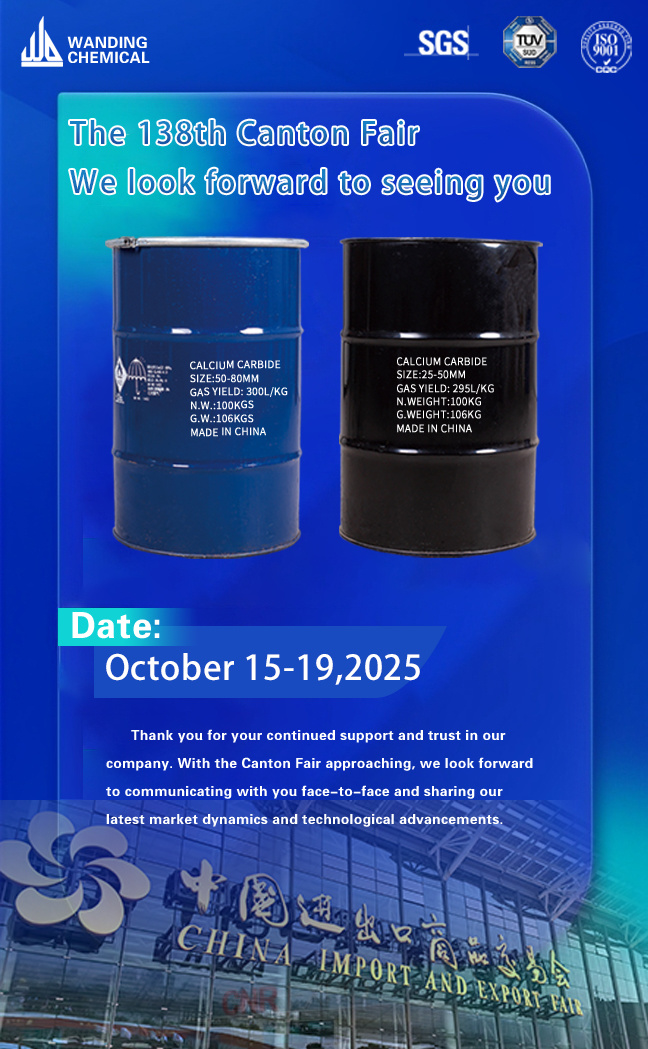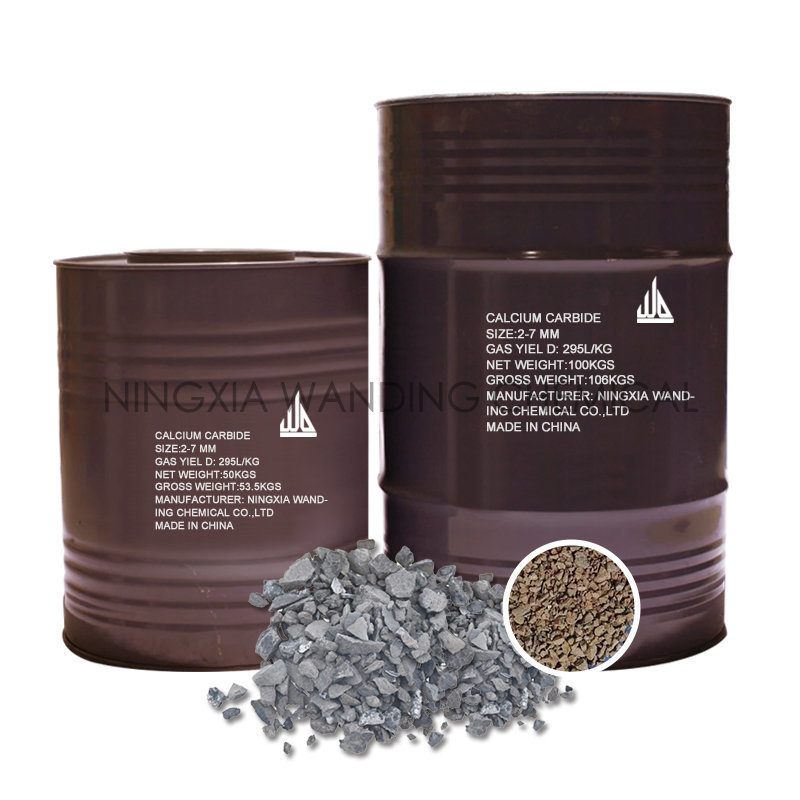The Essential Role of China Calcium Carbide 25-50mm in Modern Metallurgy: A Comprehensive Analysis
Release Time:
2025-02-07
The Essential Role of China Calcium Carbide 25-50mm in Modern Metallurgy In the ever-evolving landscape of metallurgy, the significance of China Calcium Carbide 25-50mm cannot be overstated. This material has emerged as a cornerstone in various industrial applications, primarily due to its unique properties and versatility. In this comprehensive analysis, we will delve into its production, applica
The Essential Role of China Calcium Carbide 25-50mm in Modern Metallurgy
In the ever-evolving landscape of metallurgy, the significance of China Calcium Carbide 25-50mm cannot be overstated. This material has emerged as a cornerstone in various industrial applications, primarily due to its unique properties and versatility. In this comprehensive analysis, we will delve into its production, applications, benefits, and future prospects, providing a detailed understanding of its role in modern metallurgy.
Table of Contents
- 1. Introduction to Calcium Carbide
- 2. Production of China Calcium Carbide 25-50mm
- 3. Key Properties of Calcium Carbide
- 4. Industrial Applications of Calcium Carbide
- 5. Advantages of Using Calcium Carbide in Metallurgy
- 6. Environmental Considerations in Calcium Carbide Production
- 7. The Future of Calcium Carbide in Metallurgy
- 8. Frequently Asked Questions
- 9. Conclusion
1. Introduction to Calcium Carbide
Calcium carbide is a chemical compound with the formula CaC2. It is primarily known for its use in the production of acetylene gas, which serves as a fuel and a building block for various organic chemicals. In metallurgy, particularly in steelmaking and other metal processing operations, calcium carbide plays a pivotal role. The specific grade, China Calcium Carbide 25-50mm, is characterized by its optimal particle size, which enhances its functionality in metallurgical processes.
2. Production of China Calcium Carbide 25-50mm
The production of calcium carbide involves the reaction of lime (CaO) with carbon in an electric arc furnace. This process requires high temperatures, approximately 2000°C, to facilitate the reaction:
CaO + 3C → CaC2 + CO
China is a leading producer of calcium carbide, leveraging its abundant resources of limestone and carbon sources. The production of 25-50mm calcium carbide is achieved through controlled processing and screening, ensuring uniformity and high quality. The manufacturing process also adheres to stringent regulations to minimize environmental impact.
3. Key Properties of Calcium Carbide
Calcium carbide exhibits several essential properties that make it suitable for metallurgical applications:
- High Purity: The purity levels in China Calcium Carbide are critical for ensuring optimal chemical reactions in metallurgical processes.
- Size Consistency: The 25-50mm particle size ensures efficient handling and application in industrial settings.
- Reactivity: Calcium carbide's reactivity with moisture produces acetylene gas, making it valuable in various chemical processes.
- Stability: When stored properly, calcium carbide maintains its properties and does not degrade, ensuring reliability in applications.
4. Industrial Applications of Calcium Carbide
Calcium carbide is utilized in various sectors, primarily in metallurgy. Some of its key applications include:
4.1 Steelmaking
In steel production, calcium carbide is used as a desulfurizing agent, effectively removing sulfur impurities from molten steel. This enhances the quality of the final product and improves its mechanical properties.
4.2 Ferroalloy Production
Calcium carbide is essential in the production of various ferroalloys, which are used to impart specific properties to steel and other alloys.
4.3 Chemical Synthesis
Beyond metallurgy, calcium carbide is employed in the synthesis of organic compounds, particularly acetylene, which is a vital precursor in manufacturing plastics, solvents, and other chemicals.
4.4 Lighting Applications
Historically, calcium carbide was used in carbide lamps for lighting purposes, producing acetylene gas when it reacts with water. While less common today, this application highlights the versatility of the compound.
5. Advantages of Using Calcium Carbide in Metallurgy
The incorporation of China Calcium Carbide 25-50mm in metallurgical processes offers several benefits:
- Enhanced Quality: Calcium carbide improves the purity of steel by effectively removing sulfur, resulting in higher-quality end products.
- Cost-Effectiveness: Its use in desulfurization can lead to lower overall production costs by minimizing waste and improving yield.
- Process Efficiency: The specific particle size of 25-50mm ensures better handling and more efficient reactions in various metallurgical processes.
- Versatility: Beyond metallurgy, its applications in chemical synthesis further enhance its value in industrial settings.
6. Environmental Considerations in Calcium Carbide Production
While the production of calcium carbide is essential for various applications, it is crucial to consider its environmental impact. The following measures are critical:
- Emission Controls: Implementing advanced emission control technologies can minimize air pollutants generated during production.
- Waste Management: Proper waste management practices, including recycling and treatment of byproducts, are essential to mitigate environmental harm.
- Resource Efficiency: Utilizing sustainable resources and optimizing energy consumption during production can reduce the ecological footprint.
7. The Future of Calcium Carbide in Metallurgy
The future outlook for calcium carbide in metallurgy appears promising. As industries increasingly focus on sustainability and efficiency, the demand for high-quality calcium carbide is expected to rise. Innovations in production techniques and applications will further enhance its role in metallurgy and beyond. The continued growth in the steel and ferroalloy markets, coupled with advancements in chemical synthesis, may lead to expanded uses of calcium carbide in various sectors.
8. Frequently Asked Questions
8.1 What is calcium carbide used for in metallurgy?
Calcium carbide is primarily used as a desulfurizing agent in steel production, improving the purity and quality of the final product.
8.2 How is calcium carbide produced?
Calcium carbide is produced by reacting lime with carbon in an electric arc furnace at high temperatures.
8.3 What are the environmental impacts of calcium carbide production?
Calcium carbide production can generate air pollutants and waste, making emission control and waste management crucial for minimizing environmental impact.
8.4 Why is the 25-50mm size significant?
The 25-50mm size of calcium carbide particles ensures better handling and efficient reactions in metallurgical processes.
8.5 What are the future trends for calcium carbide?
Future trends indicate a growing demand for calcium carbide in metallurgy and other industries, driven by advancements in production techniques and increasing industrial applications.
9. Conclusion
In conclusion, China Calcium Carbide 25-50mm plays a vital role in modern metallurgy, underpinned by its unique properties and versatile applications. From enhancing steel quality to its significant role in chemical synthesis, calcium carbide stands as an essential component in various industrial processes. As we look to the future, ongoing advancements and a focus on sustainability will shape its continued significance in the metallurgical landscape. Understanding its production, properties, and applications is vital for industries aiming to optimize their processes and outcomes.
News Hotspot





















